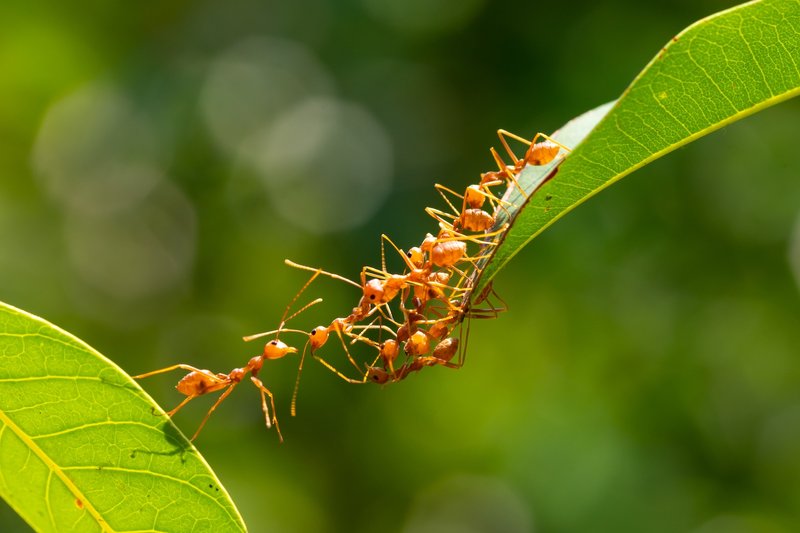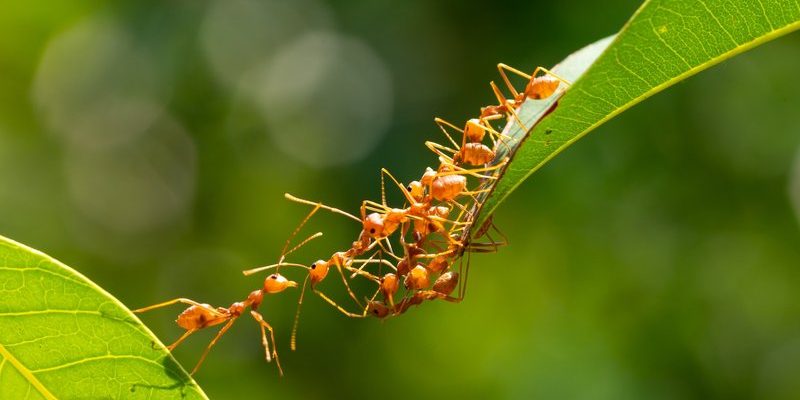
Now, you might be wondering, how does something so small have such a significant impact? Well, let me explain. Think of ant lion larvae as nature’s very own pest control agents. Their unique hunting tactics and ability to thrive in various environments make them essential not just for their own survival but also for maintaining a balanced ecosystem. In this article, we’ll explore their life cycle, hunting strategies, and the vital roles they play in their habitats.
Understanding Ant Lion Larvae
Ant lion larvae belong to a group of insects in the order Neuroptera, which includes creatures like lacewings and owlflies. These larvae are known for their distinctive, elongated bodies and powerful jaws. They typically reside in sandy or loose soil, where they dig conical pits to trap their prey—usually ants and other small insects.
What’s interesting is how they camouflage themselves. With their earthy hues and the ability to bury themselves in the sand or soil, they become nearly invisible to their unsuspecting lunch. When an ant or another insect slips into the pit, the ant lion launches into action, grasping the prey with its fierce jaws and quickly immobilizing it. Honestly, it’s quite the dramatic scene for such a small creature!
Many people might be surprised to learn that these larvae can take up to several years to mature into adult ant lions. During this time, they eat, grow, and prepare for their eventual transformation. Once they’re ready, they pupate in a protecting case made of sand and debris, eventually emerging as adult insects to continue the cycle of life.
The Role of Ant Lion Larvae in Soil Ecosystems
Ant lion larvae play an important role in soil ecosystems. They help control populations of small insects, particularly ants, which can become overly abundant and disrupt the balance of the ecosystem. By preying on these pests, ant lions assist in regulating insect populations, contributing to a healthier environment.
Additionally, as they dig their conical pits, they aerate the soil. This action helps improve water infiltration and root growth, both of which are crucial for supporting plant life. Imagine the larvae as tiny farmers working tirelessly beneath the surface, ensuring their soil is rich and well-structured.
Their presence also contributes to nutrient cycling. As they consume their prey, they break down organic material, returning nutrients to the soil when they excrete waste. This nutrient release promotes plant growth and supports other organisms in the ecosystem. In this way, ant lion larvae indirectly assist in sustaining the intricate web of life around them.
Ant Lion Larvae in Aquatic Ecosystems
While many people associate ant lion larvae with soil ecosystems, some species thrive in aquatic environments. These aquatic larvae are just as fascinating and have adapted to living in water, often found in shallow ponds or streams.
In these habitats, the role of ant lion larvae extends beyond preying on small insects. They also help maintain the balance of aquatic life by consuming mosquito larvae and other pests. This natural pest control is essential, especially in areas where mosquitoes can spread diseases. By keeping these populations in check, ant lion larvae contribute to the overall health and stability of aquatic ecosystems.
Moreover, in both soil and water ecosystems, the presence of ant lions can serve as an indicator of environmental health. A thriving population of these larvae often suggests a balanced ecosystem, which can be a good sign for other organisms sharing the same habitat.
Hunting Strategies of Ant Lion Larvae
Ant lion larvae are renowned for their unique hunting strategies, primarily their pit traps. These traps are not just simple holes; they are meticulously crafted structures designed for one purpose: to capture prey. The larvae dig a conical pit in sandy or loose soil, and the steep sides create a slippery slope that makes it difficult for insects to escape once they fall in.
When an unsuspecting ant or insect wanders too close, the larvae wait motionless at the bottom of the pit. As the prey tumbles in, the ant lion quickly strikes, using its powerful jaws to seize them before they can escape. It’s a brutal yet effective strategy that showcases the larvae’s predatory instincts.
Additionally, ant lion larvae exhibit patience and stealth. They can stay hidden for long periods, waiting for the right moment to strike. This method saves energy and increases their chances of capturing food. It’s a great lesson in nature’s way of doing more with less, and it truly demonstrates the fascinating survival tactics of these tiny predators.
Life Cycle of the Ant Lion
The life cycle of an ant lion consists of several stages: egg, larva, pupa, and adult. The journey begins when female adults lay eggs in sandy soil or near water. These eggs hatch into larvae, which are the stage we typically associate with their predatory behavior.
Once the larvae have fed and grown sufficiently, they pupate, forming a protective case around themselves. This stage can last from a few weeks to several months, depending on environmental conditions. When the time is right, the adult ant lion emerges from its pupal state, ready to start the cycle anew.
The adult stage is quite different from the larval stage. While the larvae are fierce predators, adults primarily feed on nectar and other sugary substances, which can be surprising given their predatory past. This transformation highlights how diverse and adaptable insects can be throughout their lives.
The Importance of Ant Lion Conservation
Despite their small size, ant lions play a big role in maintaining healthy ecosystems. However, their populations are often affected by habitat loss, pesticide use, and climate change. When ecosystems become unbalanced due to these factors, it can disrupt the delicate roles that these larvae play.
Conserving ant lion habitats is crucial for their survival and the overall health of ecosystems. Practices like reducing pesticide use, promoting native plant growth, and protecting natural habitats can help support these fascinating creatures.
By understanding their importance, we can take steps to protect them and, in turn, the ecosystems they help sustain. After all, every little creature has its role in the grand tapestry of life, and ant lion larvae are no exception.
Ant lion larvae may be small, but they are certainly mighty players in both soil and aquatic ecosystems. Through their unique hunting strategies and vital roles in nutrient cycling, they help maintain balance and health in their environments. Whether they’re preying on pests or aerating soil, these tiny titans contribute significantly to biodiversity.
By learning more about ant lion larvae and their fascinating life cycle, we can appreciate their importance and advocate for their protection. In this big picture of nature, every creature counts—and ant lion larvae remind us that even the smallest can have a profound impact. So, next time you’re out in nature, keep an eye out for these remarkable little hunters; they might just surprise you!

